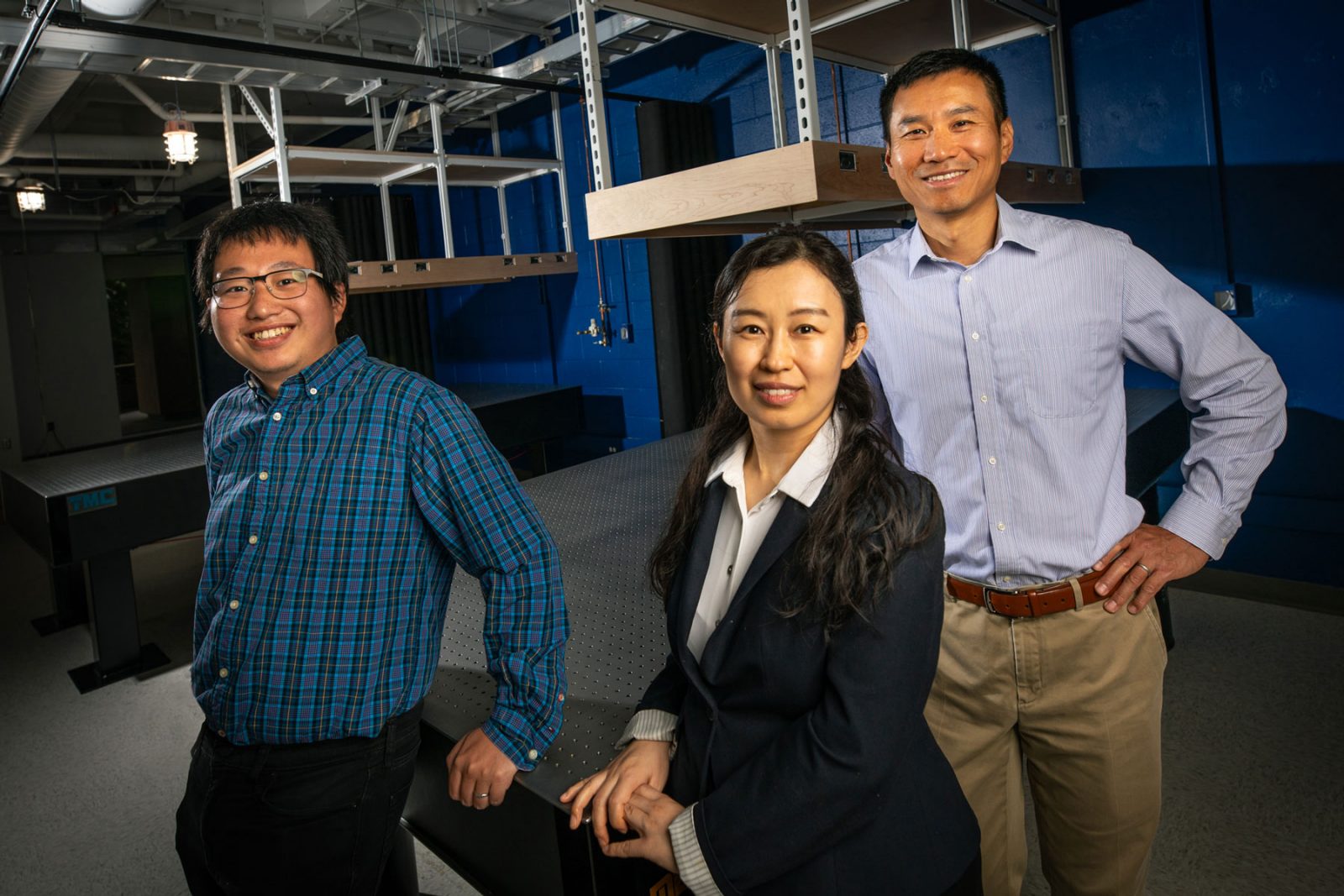Virginia Tech researchers are leveraging a quantum-based discovery to help people see better in the dark.
The Defense Advanced Research Projects Agency (DARPA) is investing up to $2.4 million over the next five years into a project from Virginia Tech Center for Quantum Information Science and Engineering. Researchers are using principles of quantum mechanics to achieve ultrasensitive thermal imaging at room temperature and push the fundamental limits of what infrared detectors can sense.
Led by Linbo Shao, assistant professor in the Bradley Department of Electrical and Computer Engineering, the team’s new approach aims to sharpen the sensitivity of detectors looking at the mid- and long-wavelength infrared part of the spectrum. This band of radiation is key to night vision, monitoring body temperature, and spotting forest fires as well as tracking rockets, missiles, and airplanes. Enhancing the sensitivity of such detectors would open new opportunities for research and applications, including better ways to search for chemical signs of life on other planets, stealth navigation of vehicles in pitch black, and early disease detection through breath analysis.
Shao is collaborating with Yizheng Zhu, associate professor of electrical and computer engineering and member of the Virginia Tech quantum community, as well as Yu Yao from Arizona State University.

The quest for ever-increasing sensitivity
Conventional infrared detection can achieve single-photon levels of sensitivity, but it requires cryogenic cooling to tamp down interference, which increases cost and reliability problems. Meanwhile, thermal detectors can operate at room temperature but offer far lower performance levels.
Shao’s team is combining the best parts of infrared and thermal detection in what is called an optomechanical sensor to bridge the technological gap. An optomechanical sensor optically detects heat. The sensor absorbs infrared light and then converts it to heat, which causes a custom-fabricated resonating platform to vibrate at a certain frequency.
To achieve extra sensitivity, Shao, Zhu and their team aim to move the needle to the “exceptional point” — literally.
The team is relying on a quirky behavior exhibited by certain systems when they reach the so-called exceptional point, where a quantum property called parity-time symmetry breaks down and results in a dramatic increase of sensitivity.
Like a musician tuning to a certain pitch, the researchers will tweak and tune the vibrations within the resonating platform to the sweet spot where the mathematical values associated with the vibrations collapse on each other. At this exceptional point, a miniscule vibration from an infrared input will trigger a much larger signal that is far easier to detect.
“Using the exceptional point is really what sets this endeavor apart from anything that’s come before — it’s a brand new strategy for thermal detection,” said Shao. “It’s not an engineering improvement, it’s a transformative approach.”
Quantum inspiration
Using exceptional points to unlock ultrasensitive detection is only one of the new avenues springing open as researchers tap into quantum concepts and emerging technologies, according to Sophia Economou, who directs the Center for Quantum Information Science and Engineering at Virginia Tech.
“This work is an example of how the Virginia Tech quantum community is pushing the quantum frontiers within classical systems and fields,” Economou said. “While we are advancing quantum technologies, we are also interfacing with classical fields and systems.”
Researchers also are plugging quantum concepts into pre-existing technology, as is the case with Shao’s project.
“Quantum concepts can apply to device design. This is what we call inspiration of quantum,” Shao said. “These concepts can be applied to decades-old technology like thermal sensors, and provide a huge lift in terms of performance or capability.”
At this point, Shao’s team is using quantum inspiration to redefine how sensitive and robust infrared detectors can be at the single-pixel level. As researchers learn more, they will apply their discoveries to full infrared sensor arrays to peer further into the dark.
Editor’s note: This story does not reflect an endorsement or policy by DARPA or any other government agency.
– Lindsey Haugh

